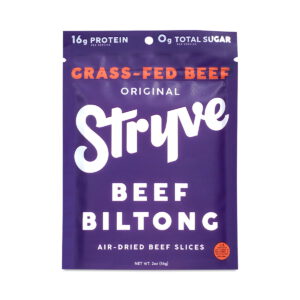- Understanding the Importance of Healthy Eating
- Creative Meal Ideas for All Ages
- Incorporating Fun Themes into Meal Times
- Engaging Activities to Promote Healthy Eating
- Tips for Making Grocery Shopping Enjoyable
- Creating a Supportive Eating Environment at Home
When it comes to grocery shopping, it’s important to make the experience not only efficient but also enjoyable. For busy people juggling multiple responsibilities, a well-planned shopping trip can save time and money while promoting fun healthy eating. Start with a strategy—create a comprehensive shopping list based on your meal plan for the week. This helps in avoiding impulse buys and ensures you have all the ingredients needed for your enjoyable meals.
Consider focusing on local and seasonal produce. Not only is this often more budget-friendly, but it also supports local farmers and reduces your carbon footprint. Plus, fresh fruits and vegetables taste better and are more nutritious when they are in season. Check out your local farmers’ markets or community-supported agriculture (CSA) programs for the best options.
For those embracing a vegan lifestyle, make sure to stock up on staples such as lentils, chickpeas, quinoa, and a variety of nuts and seeds. These ingredients are not only packed with protein and fiber but also versatile for various recipes. Ensure that your shopping list includes plenty of leafy greens like kale and spinach, as well as a rainbow of fruits and vegetables to maximize nutrient intake.
Another great tip for healthy grocery shopping is to prioritize organic foods, especially for items that you commonly consume and those that have thicker skins, which can hold pesticides. The Environmental Working Group provides lists of the “Dirty Dozen” and “Clean Fifteen” to help you make informed choices. Remember that eating organically can often be more affordable if you buy in bulk or choose store brands.
When it comes to safety in grocery shopping, whether online or in-store, keep a few precautions in mind. For online shopping, always ensure the site is secure (look for “https” in the URL) and read reviews before purchasing from unfamiliar retailers. Pay attention to expiration dates when buying perishable items and check the packaging for any signs of damage.
For in-store shopping, practice proper food handling by placing raw meats in separate bags to avoid cross-contamination. Be sure to inspect packaging for any tears or leaks, particularly with refrigerated and frozen items. Lastly, consider using reusable shopping bags to reduce waste and keep your groceries organized.
By following these grocery shopping tips, you can make healthy eating a delightful part of your family’s lifestyle, regardless of how busy life may get. Save yourself time and money while enjoying the benefits of nutritious meals that support your family’s well-being.
Creative Meal Ideas for All Ages
To make mealtimes engaging for all ages, it’s essential to introduce a variety of creative meal ideas that not only nourish but also captivate the senses. Utilizing a mix of colors, textures, and flavors can transform the ordinary into the extraordinary, encouraging the whole family to enjoy healthy eating without it feeling like a chore.
One approach is to create themed meals that resonate with different cultures or fun concepts. For example, you could have “Taco Tuesday,” where each family member can build their taco using a variety of healthy fillings such as grilled chicken, black beans, sautéed vegetables, and fresh toppings like avocado and salsa. To make it even more entertaining, provide an array of colorful sauces and spices for them to experiment with.
Another idea is to incorporate a “Rainbow Plate” concept where meals are designed to include a variety of colorful fruits and vegetables. You could present a chart at the table indicating different colors and their health benefits, encouraging everyone to fill their plates with a spectrum of colors each meal. Kids often find it fun to see who can create the most colorful plate, and this not only introduces them to different nutrients but also engages them in discussions about what each color represents.
Here are some additional meal ideas to entice family members of all ages to join in on fun healthy eating:
| Meal Idea | Description | Age Group |
|---|---|---|
| DIY Pizza Night | Use whole wheat pita or cauliflower bases and offer a variety of healthy toppings like spinach, tomatoes, and lean proteins. | All ages |
| Fruit and Veggie Art | Have kids create faces or animals using slices of fruits and vegetables, encouraging creativity while eating. | Preschoolers to school-age |
| Breakfast for Dinner | Feature a breakfast spread of whole grain pancakes, Greek yogurt, and fresh fruit, making breakfast options an enjoyable meal at any time. | All ages |
| Healthy Sushi Rolls | Encourage family roll-making with nori, brown rice, and a variety of fillings like cucumber, carrots, and cooked shrimp or tofu. | Tweens and teens |
| Salad Bar | Create a buffet style salad bar with choices including leafy greens, various toppings, proteins, and dressings, letting everyone personalize their salads. | All ages |
To further engage younger eaters, consider involving them in the cooking process. When children help prepare meals, they often take more ownership of what they eat, finding excitement in tasting their own creations. Activities such as chopping vegetables (with supervision), stirring mixtures, or even setting the table can create a sense of accomplishment and enjoyment.
For busy people who grapple with time constraints, batch-cooking sessions can be a game changer. Dedicate a couple of hours over the weekend to prepare healthy meals in advance, such as soups, stews, and grain bowls that can be refrigerated or frozen. This practice not only saves time on busy weekdays but also provides an opportunity for family members to select their favorite meals for the week, further involving them in the eating process.
By integrating these creative meal ideas, families can cultivate an environment that fosters fun and appreciation for healthy eating, ensuring that mealtime is always an enjoyable experience, no matter the age.
Incorporating Fun Themes into Meal Times
Making mealtimes engaging and enjoyable can be transformed by incorporating fun themes into your meals. This not only stimulates interest but also provides educational opportunities while bonding with family. Think of themes that resonate—celebrating cultural cuisines or fun concepts appeals to everyone, especially busy people who are looking for an engaging way to introduce healthy eating habits.
For instance, you might organize an “Italian Night,” replete with whole grain pasta, homemade tomato sauce, and vibrant vegetables like spinach and bell peppers. Allow everyone to customize their dish with various toppings, such as olives, nutritional yeast, or grilled chicken. This personal touch not only promotes fun healthy eating but also encourages family members to explore new flavors and ingredients.
A weekly “Meatless Monday” is another fantastic way to focus on vegan foods while sparking excitement around meals. Feature dishes like chickpea curry or zucchini noodles, letting the kids pick their favorite ingredients from your well-stocked pantry. Engaging them in discussions about protein sources and health benefits makes it a learning moment, turning ordinary meals into enjoyable experiences.
For families with diverse tastes, consider a “Build-Your-Own” theme night. This could be tailored around tacos, sushi rolls, or even smoothie bowls, where each person selects their preferred healthy ingredients. Create a colorful spread of wholesome toppings, like beans, avocados, or fresh fruits. The process serves to intrigue family members of all ages, motivating them to eat healthier and explore new tastes they might not otherwise choose.
Incorporating fun visuals can elevate the dining experience. You might use artistic serving platters, playful utensils, or decorative garnishes that catch the eye. Even simple things like arranging food in smiley faces or colorful patterns can make a huge difference, particularly for children. You could also add a “Mystery Ingredient” for everyone to guess and incorporate into their dishes, which turns the mealtime into an interactive game.
For the more budget-conscious shoppers, interesting themes don’t need to break the bank. Plan themed nights around the seasonal produce you find at your local market. Elements like vibrant peppers in the fall or earthy root vegetables in the winter can be turned into fun dishes that highlight the season’s best offerings, all while supporting local farmers.
When it comes to health and safety, especially with online shopping as an avenue for busy people, always look for products that are organic whenever possible, particularly items like tomatoes, strawberries, and potatoes. Secure your online shopping with trusted retailers and be mindful of sales that feature seasonal items, both for savings and fresher ingredients. When shopping in-store, make sure to inspect packages for freshness and ensure that items are well within their expiration dates for both prepared and perishable products.
By transforming mealtimes with fun themes and engaging elements, you not only make healthy eating a priority but also foster enjoyable meals that the whole family wants to be a part of—while setting the foundation for lifelong healthy habits.
Engaging Activities to Promote Healthy Eating
Engaging the entire family in activities that promote healthy eating can significantly enhance the overall experience of enjoyable meals. One effective approach is to create cooking challenges that encourage participation and creativity in the kitchen. For instance, you might establish a “Family Cook-Off” where each family member prepares their own healthy dish or snack. Set a theme, like using a specific ingredient, and then have everyone taste and vote for their favorite. This not only stimulates interest in healthy eating but also allows everyone to showcase their culinary skills.
Another engaging activity is a community garden or family herb garden. Working together to plant, grow, and harvest fresh ingredients can instill a sense of pride and ownership. Involvement in gardening teaches important lessons about where food comes from and the importance of fresh produce. Plus, you can incorporate the harvested items into your meals, making them even more special.
For busy people looking to foster healthy eating habits, meal prep parties can also be a hit. Gather friends or family and dedicate a few hours to preparing meals for the week. Provide various healthy recipes, organize ingredients, and create a fun atmosphere with music and conversation. This collaborative effort not only alleviates stress around meal planning but also emphasizes the fun aspect of healthy eating.
Incorporating educational aspects into these activities can further engage participants. You might host “Nutrition Nights” where a family member or guest speaker shares interesting information about the health benefits of certain foods. Display colorful charts or infographics that highlight the nutritional value of different ingredients, which can make learning about healthy eating enjoyable and informative for all ages.
Physical activities tied to healthy eating can also be memorable. Hosting a “Healthy Cooking Walk” can be a unique twist where you take a stroll through your local farmer’s market to collect fresh ingredients before heading home to cook as a family. This active engagement not only promotes physical fitness but also creates lasting memories associated with the food you’re preparing.
Utilizing fun, interactive technology can also bridge the gap between health and enjoyment. There are various apps and websites that offer games centered around food, nutrition, and cooking. Challenge family members to learn new recipes, and the person who prepares the most dishes in a month could receive a small prize.
Lastly, don’t overlook the power of social media. Encourage family members to share their healthy cooking experiences or creations online. This not only documents their journey into enjoyable meals but can inspire others within their networks, fostering a community around fun healthy eating practices.
“Let food be thy medicine, and medicine be thy food.” – Hippocrates
By integrating these engaging activities into daily routines, families can create an inviting and enjoyable atmosphere surrounding healthy eating. It fosters a supportive community and celebrates the joys of cooking and sharing nutritious meals together.
Tips for Making Grocery Shopping Enjoyable
Making grocery shopping a fun and enjoyable experience can make a significant difference in your approach to healthy eating. One effective strategy is to turn your shopping trip into a mini adventure. Instead of simply checking items off a list, explore your local grocery store or farmer’s market as if you’re on a treasure hunt. Challenge yourself to find new ingredients or products that you’ve never tried before, and make it a point to include at least one new discovery on each shopping trip. This not only adds excitement but also expands your culinary repertoire.
Involve family members in the process to enhance the fun. Create a shopping day where everyone participates in selecting ingredients for specific meals they want to make. This can double as an educational opportunity, discussing the health benefits of different foods and how to incorporate them into your diet. When children are involved in grocery shopping, they often feel empowered to make healthier choices, and this involvement fosters a positive relationship with food.
Consider setting a budget and making a game out of staying within that limit while still purchasing nutritious foods. This not only encourages creativity in meal planning but also teaches valuable lessons about budgeting and the importance of making informed choices. Use your meal plan as a guide, but allow flexibility for impulse buys of wholesome items that catch your eye.
Take advantage of grocery store promotions or loyalty programs, which often provide discounts on organic or healthy products. Look for weekly deals and plan your meals around these savings; this way, you can enjoy healthy groceries without breaking the bank. Keeping an eye out for seasonal produce can also inspire meals that are not only delicious but cost-effective, designed to highlight what’s fresh and in season.
To make grocery shopping more enjoyable, consider pairing it with another activity. For example, if you live near a local market that also has a park or cafe, take a leisurely stroll there and enjoy a healthy snack before or after shopping. The change of scenery can make the experience feel less like a chore and more like a rewarding outing.
Finally, don’t hesitate to bring music into your grocery shopping experience. Create a fun playlist that sets a positive tone while you navigate the aisles, turning your shopping trip into a lively adventure. The right soundtrack can elevate your mood and energize your approach to picking out healthy foods.
“`html
- How can I stick to my grocery budget while eating healthy?
- Plan your meals ahead of time based on what’s on sale and create a shopping list accordingly. Look for seasonal fruits and vegetables, as they are usually cheaper and fresher.
- What should I do if my family refuses to eat healthy foods?
- Involve them in meal planning and preparation. When family members participate in choosing and cooking meals, they are more likely to try new foods. You can also try to incorporate healthy options into their favorite dishes.
- Are organic foods worth the extra cost?
- Organic foods can be beneficial as they tend to be free from synthetic pesticides and fertilizers. Prioritize buying organic for the “Dirty Dozen” fruits and vegetables to minimize pesticide exposure.
- How can I make grocery shopping more time-efficient?
- Create a comprehensive shopping list organized by the layout of your store to avoid backtracking. Shopping during off-peak hours can also help you navigate the aisles more easily.
- Is it better to shop online or in-store for healthy groceries?
- Both have their advantages; online shopping allows you to compare prices easily and avoid impulse purchases. In-store shopping lets you pick fresh items personally, making it easier to choose the best quality produce.
- How often should I go grocery shopping?
- A weekly shopping trip usually works best for most families, allowing you to replenish fresh produce while minimizing waste. Adjust the frequency based on your family’s consumption patterns and meal plans.
- Can I involve my kids in grocery shopping, and how can that help?
- Yes, involving your kids in grocery shopping can teach them about healthy eating and budgeting. It can transform shopping into a fun educational experience and encourage them to appreciate and try new foods.
“`
Creating a Supportive Eating Environment at Home
Creating a supportive eating environment at home starts with making the grocery shopping experience enjoyable and efficient, especially for busy people looking to lead healthier lifestyles. Begin by transforming your approach to shopping—view it as a fun adventure rather than a mundane task. One innovative idea is to incorporate a family challenge during trips to the grocery store: select one new healthy ingredient each week that none of you has tried before. This enhances excitement and encourages exploration of diverse foods that can lead to enjoyable meals.
When it comes to healthy foods, focus on stocking your pantry and refrigerator with nutrient-dense options. Make it a point to include a wide variety of colors in your grocery list—think red bell peppers, green leafy vegetables, orange sweet potatoes, and blue berries. This not only makes your meals visually appealing but also ensures your family is receiving a range of vitamins and minerals. You can create a checklist of staple items to keep on hand, such as:
- Whole grains (quinoa, brown rice, whole-wheat pasta)
- Legumes (beans, lentils, chickpeas)
- Nuts and seeds (almonds, walnuts, chia seeds)
- Fresh produce (fruits and vegetables in various colors)
- Lean proteins (chicken, fish, tofu, tempeh)
- Dairy or dairy alternatives (Greek yogurt, almond milk)
For those who follow a vegan lifestyle, exploring the aisles for plant-based proteins can also be fun. Look for new brands and types of meat substitutes or dairy-free alternatives that can expand your culinary repertoire. Having a well-stocked pantry filled with versatile, vegan-friendly items can set the stage for dishes that are not only hearty but also enjoyable.
When shopping, choose local and seasonal produce whenever possible. Not only does this invariably ensure freshness, but it can also save you money. By visiting local farmers’ markets or co-ops, you’re likely to find organic options at competitive prices. It’s always a treat to share your finds with the family—including those vibrant vegetables that could become the star of your next themed dinner night.
As you navigate grocery aisles, remember to prioritize food safety. If you’re shopping online, always confirm that you’re ordering from reputable sites. Check ratings and reviews, and opt for brands that you are familiar with. If purchasing perishables, ensure they will be safely packaged to maintain freshness during transit. When you do shop in-store, be vigilant for any signs of spoilage, especially on items with expiration dates approaching rapidly. Separate raw meats in your cart to avoid cross-contamination and utilize reusable bags to contribute to a healthier planet.
For budget-conscious shoppers, sorting through discounts and sales can add an element of surprise to your shopping experience. Create a shopping list that aligns with weekly store promotions and seasonal offerings to maximize your savings. Look out for bulk sale options that allow you to stock up on essentials without exceeding your budget. It’s rewarding to know that healthy eating can be both affordable and fun.
Involve your family in the grocery shopping process to enhance engagement and excitement. Set a casual rule that whoever picks the most interesting new healthy food gets to choose the family meal for the week. This not only heightens anticipation for meals but also fosters a collaborative cooking environment at home, contributing to more enjoyable mealtimes.
By embracing these strategies, grocery shopping can evolve from a routine chore into a delightful experience that enhances your family’s relationship with food. This creates a supportive environment for healthy eating that is not only effective but also fun.
New Customers Offer!
Free Gift for the new customer
$24 Value, When You Subscrib Visit Thrive Market











